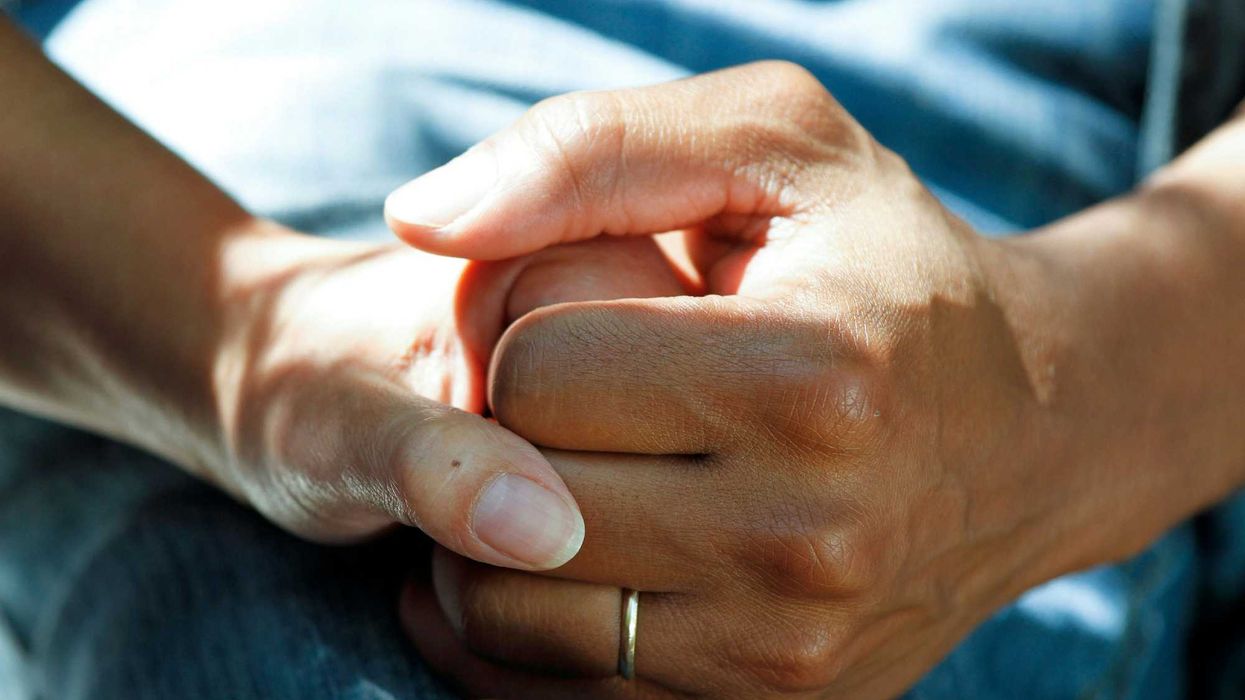Kull is Program Director of the Program for Public Consultation.
Lewitus is a Research Analyst at Voice of the People whose research interests focus on policy, public opinion and democracy reform.
"Ear to the People,” is an analysis conducted by Voice of the People, that tracks surveys on foreground policy issues from numerous sources. The surveys use standard polls with solid methodology, as well as including public consultation surveys that provide respondents briefings and pro and con arguments (reviewed by experts across the spectrum of views).
While it may sometimes seem that surveys produce contradictory results, usually when one examines the wording carefully it becomes clear that the questions are actually significantly different, each one providing a different angle. Integrating the findings together provides a complex, but coherent, picture of the public’s views.
The key takeaways from an analysis of surveys conducted on attitudes of Americans on various aspects of the Ukraine war were:
- A large bipartisan majority supports the U.S. providing military assistance to help Ukraine, including military equipment, ammunition, training and intelligence.
- When U.S. support to Ukraine is framed only in terms of financial assistance, support drops to a modest majority or a plurality, with Republicans the most divided.
- Bipartisan majorities or pluralities support sending both light and advanced weapons, and defense systems.
- A very large bipartisan majority supports the U.S. sending humanitarian aid.
- Majorities prefer that the U.S. support Ukraine's position of not entering peace negotiations until Russia has first committed to withdraw its forces or until Ukraine has reclaimed its territory, even if this stance results in a prolonged conflict. While a clear majority of Democrats favor this position, Republicans’ views are more mixed.
Dig into the data below to learn more about the public’s views on whether the US should provide military equipment, training, intelligence.
A bipartisan seven-in-ten supports the U.S. providing military assistance to Ukraine, including military equipment, ammunition, training and intelligence. Republican support is lower, but still a majority.
When provided with background information and pro and con arguments:
- 69% favored “the U.S. continuing to provide military assistance to Ukraine, including military equipment, ammunition, training and intelligence” (Republicans 55%, Democrats 87%, independents 58%) ( Program for Public Consultation, July 2023)
Standard polls:
- 65% said the U.S. should, “provide weapons to Ukraine” (Democrats 81%, Republicans 56%, independents 57%). ( Reuters/Ipsos, June 2023)
- 58% said the U.S. should, in response to the same question in February 2023 (Democrats 73%, Republicans 52%). ( Reuters/Ipsos, February 2023)
- 66% said the U.S. should, in response to the same question in October 2022 ( Reuters/Ipsos, October 2022)
- 75% said the U.S. should, “Supply Ukraine with military equipment” (Democrats 88%, Republicans 63%, independents 64%) ( UMD Critical Issues, June 2022)
Whether the U.S. should provide funding
Standard polls: When U.S. support to help Ukraine fight against Russia is framed only in terms of financial assistance, without specifying how the funding would be used, a small majority or plurality are in support, but less than half of Republicans.
- 54% said the U.S. should, “send financial aid to Ukraine, in addition to sending weapons,” including 72% of Democrats, but just 39% of Republicans. ( Reuters/Ipsos, June 2023)
- In a question in which “not sure” was offered, a clear plurality of 48% said the U.S. should “continue to give money to Ukraine to help it defend itself from the Russian invasion,” with 31% opposed and 22% saying “not sure.” Republicans were divided with 39% in favor and 42% opposed, while 68% of Democrats were in favor. ( Economist/YouGov, December 2022) (See Note below on providing a “not sure” option.)
- In a question that asked whether Congress should “authorize additional funding to support Ukraine” 45% were in favor with 55% opposed. This number may be lower than the Reuters/Ipsos poll because some respondents may have interpreted “additional funding” to mean over and above the present level. Just 28% of Republicans were in favor, with 71% opposed. Among Democrats, 62% were in favor. ( CNN, August 2023)
What types of military equipment should the U.S. send?
Bipartisan majorities or pluralities support sending both light and advanced weapons, and defense systems. When provided with background information and pro and con arguments:
- 73% approved of the U.S. allowing NATO allies to send US-made fighter jets to Ukraine, and the U.S. training Ukrainian pilots to operate them (Democrats 86%, Republicans 63%, independents 64%) ( Program for Public Consultation, July 2023)
Standard polls: note that when polls offer a “not sure” option, a substantial percent will choose that option, lowering the total percent in support or opposition. Research shows that this is not because those people lack any view on the policy or are undecided, but that they are expressing their lack of certainty about whether their view is correct. When the “not sure” option is not offered, most will choose an option that expresses a view.
A plurality of 45% supported the U.S. sending “Advanced weapon systems (for example, helicopters, cannons, armored vehicles)” with 29% opposed and 26% “not sure.” Among Democrats, 59% are in favor. Among Republicans, 45% are in favor and 36% opposed. ( Economist/YouGov, December 2022)
- A plurality of 46% supported “Long-range missiles” with 31% opposed and 23% “not sure.” Among Democrats, 67% are in favor. Among Republicans, 40% are in favor and 35% opposed. ( Economist/YouGov, March 2023)
- 53% supported “Tanks,” including 67% of Democrats and 48% of Republicans (with 35% opposed). ( Economist/YouGov, March 2023)
- 54% supported “Light weapon systems” (for example anti-tank weapons, rifles, ammunition), (Democrats 67%, Republicans 53%), with 34% opposed and 22% “not sure.” ( Economist/YouGov, December 2022)
- A plurality of 47% supported “the Patriot missile defense system, a surface-to-air guided missile system, in order to help Ukraine defend itself from the Russian invasion,” with 29% opposed and 26% “not sure.” Among Democrats, 61% were in support. Among Republicans 45% are in support and 37% opposed. ( Economist/YouGov, December 2022)
- 61% supported the U.S. sending “Non-lethal military assistance” (for example trucks, repair parts, computers, radars), (Democrats 74%, Republicans 60%), with 20% opposed and 19% “not sure.”( Economist/YouGov, December 2022)
Whether the U.S. should provide humanitarian aid
A very large bipartisan majority supports the U.S. sending humanitarian aid, such as food and shelter, and aid for infrastructure repair. When provided with background information and pro and con arguments:
- 80% favored, “the U.S. continuing to give humanitarian assistance to Ukraine,” including 92% of Democrats, 72% of Republicans and 73% of independents. ( Program for Public Consultation, July 2023)
Standard polls:
- 77% supported the U.S. sending “food and medical assistance” (Democrats 84%, Republicans 79%). ( Economist/YouGov, March 2023)
- 74% supported the U.S. sending “Humanitarian assistance” (for example food, civilian supplies), (Democrats 79%, Republicans 79%). ( Economist/YouGov, December 2022)
Whether Ukraine should be encouraged to enter negotiations
Majorities prefer that the U.S. support Ukraine's position of not entering peace negotiations until Russia has first committed to withdraw its forces or until Ukraine has reclaimed its territory, even if this stance results in a prolonged conflict. While a clear majority of Democrats favor this position, Republicans’ views are more mixed.
When provided with background information and pro and con arguments:
- 56% opposed the U.S. “encourag[ing] Ukraine to enter into negotiations, whether or not Russia first commits to withdraw from all of Ukraine.” Majorities of Democrats and independents were opposed (68% and 53%, respectively). Among Republicans, less than half were opposed (47%, should encourage negotiations now 53%). ( Program for Public Consultation, July 2023)
Standard polls:
- In June 2023, 62% said the U.S. should “support Ukraine in reclaiming territory Russia has captured, even if it results in a more prolonged conflict between the two nations,” with 36% saying the U.S. should instead, “try to end the conflict as quickly as possible, even if it means allowing Russia to keep territory it has captured from Ukraine.” Among Democrats, 79% said the U.S. should support Ukraine reclaiming territory. Republicans are divided (47% to 49%). ( Gallup, June 2023)
When the poll included non-committal options, the total percentage in support dropped to a plurality:
- A bipartisan plurality of 46% preferred that the U.S. “support Ukraine in its efforts against Russia until such a time that Russia withdraws from the country, even if this means the war and its effects last longer,” with 24% saying the U.S. should instead “encourage a negotiated peace to end the fighting, even if this means Russia still has control over some parts of Ukraine,” with 13% saying “neither” and 17% “don’t know.” Among Democrats, 61% said the U.S. should support Ukraine until Russia withdraws, as did a plurality of Republicans (41% to 30%). ( YouGov, February 2023)
Is Support Going Down?
Polls have shown some changes in public opinion towards aid to Ukraine since the start of the war. Support for providing military aid started very high at over seven-in-ten, gradually declined, but then recovered to two thirds and has stayed there since. The percentage saying the US is providing too much aid in general has gradually increased but is still less than 3 in 10. Republicans, however, have reached a plurality saying it is too much.
Providing military aid to Ukraine
Support for the US, “sending additional arms and military supplies to the Ukrainian government,” started at 79% in March 2022, declined to 72% in July 2022 and then to 65% in November 2022. (Chicago Council of Global Affairs). Support for the US “provid[ing] weapons to Ukraine” started at 71% in March 2022, declined to 66% in October 2022, then to 58% in February 2023, and increased to 65% in June 2023 (Reuters/Ipsos). As noted, a PPC survey in June 2023 found 69% in support of continuing to provide military aid (Program for Public Consultation).
Respondents were asked whether the US, in response to Russia’s invasion of Ukraine, was providing Ukraine with too much, too little, or about the right amount of aid. Those who said the US was providing too much aid was just 7% in March 2022, increased to 20% in September 2022 and then reached a high point of 28% in June 2023. Among Republicans, those saying too much started at a low of 9%, increased substantially to 32% and then reached a plurality of 47% (with 34% saying too little or about right) (Pew Research Center).
You can find these digests on various issues on Voice of the People’s website.


















